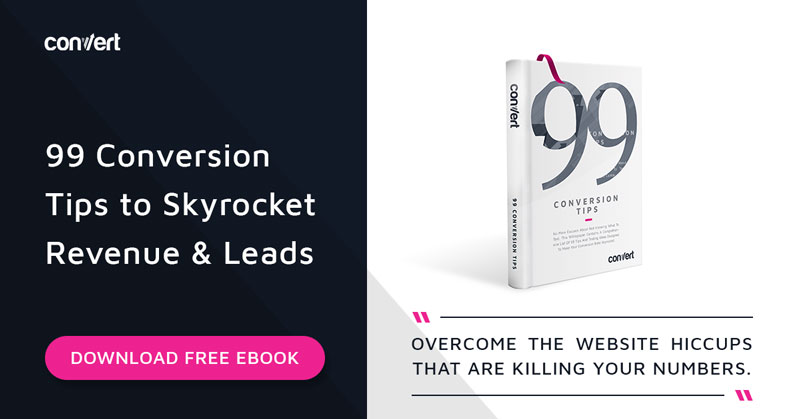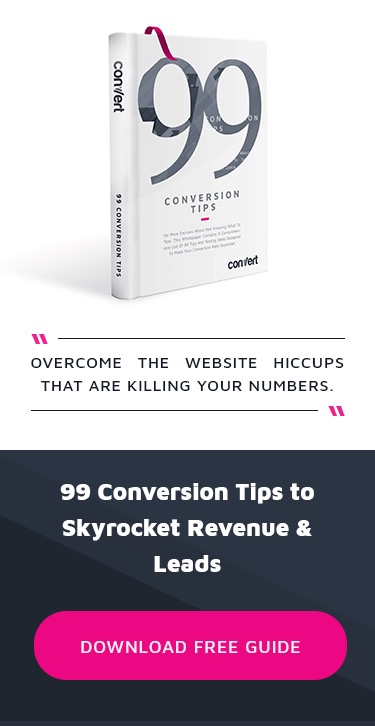5 little known (killer) ways to learn from your competitor’s conversion strategy

Whether you are managing an old site or launching a new project, you cannot really do marketing without monitoring your competitors.
And it’s really about finding the ways to fight them. There’s no niche without competition and the mere presence of competition should never discourage you to start a project.
The key is a never-ending opportunity to learn from your competitors. By implementing their success and failure in your marketing plans, you can come up with ways to discover unique angles, fill the void or simply approach your customers more efficiently.
When it comes to analyzing your competitors’ conversion optimization tactics, there’s a good deal of eye-opening insight you can learn from.
They say, “Without competition, there would be no incentive to grow” and that’s the quote I live by.
The first step would be of course browsing the site and look for:
- How and where they place their calls-to-action
- How they phrase their calls-to-action
- Which landing pages they seem to focus on (Based on their navigation menus). It’s useful to create a list of their key landing pages here
- How they phrase and promote their special offers
- How their sign-up process is built
- What their secondary calls-to-action are (for example, do they invite users to opt in for their newsletter or invite them to participate in free events? Or do they give away freebies in an effort to build up their email list?)
- How they are displaying their reviews and/or testimonials
- How they use in-content calls-to-action (check their blog and resources)
- How they are using seasonality to promote timely content or products
- How they are using social proof to convince visitors to convert (e.g. Twitter testimonials, Instagram carousels to showcase how real people are using their products, etc.)
- Any other interesting tactics you notice when browsing the site.
Make lots of notes and screenshots for future reference.
Once you are done there, here are a few tools to enhance your research:
1. Find Commercial-Intent Queries Your Competitor is Ranking For
As an SEO, I always start any analysis with organic keyword research. Google rankings give so much information on what any site is focusing on how they are structuring their website to build online visibility that you instantly get a generic idea on what types of sales they are focusing on.
Luckily, there are a few advanced SEO analytics solutions out there and provide this insight. I like using Serpstat because their filters allow me to sort out any queries by Google’s SERPs signals, for example, I can easily find which queries my competitor ranks #1 where you can also see shopping results.
Google only shows shopping results for high commercial intent queries, so these are key for discovering important traffic sources and landing pages my competitor is focusing on.
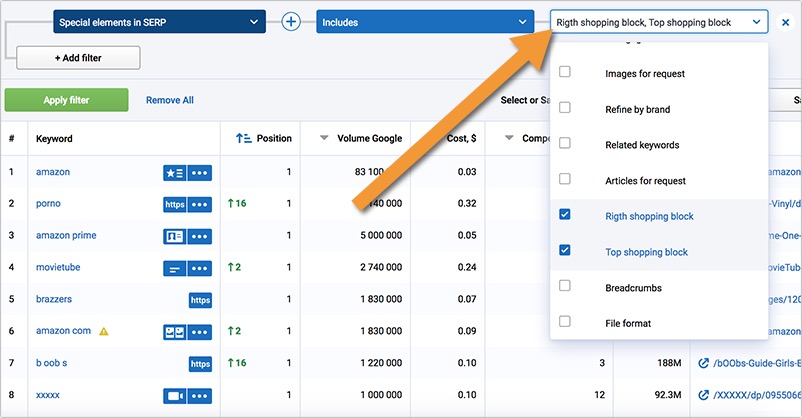
You can filter queries to show only those triggering featured snippets (mostly informational intent), “refine by brand” feature (mostly navigational intent), local map (location-based queries), etc. You can also export all the queries to use Excel filters to discover most common landing pages and topics your competitor is working on.
2. Analyze Your Competitor’s PPC Queries
Another good way to get an idea of what products and conversion paths work best for a business is to look at which keywords they are investing in within their PPC strategy.
Serpstat can give you that insight too but for the sake of variety I’ll recommend another one of my favorite tools out there: Spyfu.
Spyfu is probably the oldest competitive intelligence software of its kind. Hence it has the probably the largest database of keywords. My favorite feature within Spyfu is their keyword grouping feature which is absolutely must-check, especially when analyzing bigger brands.
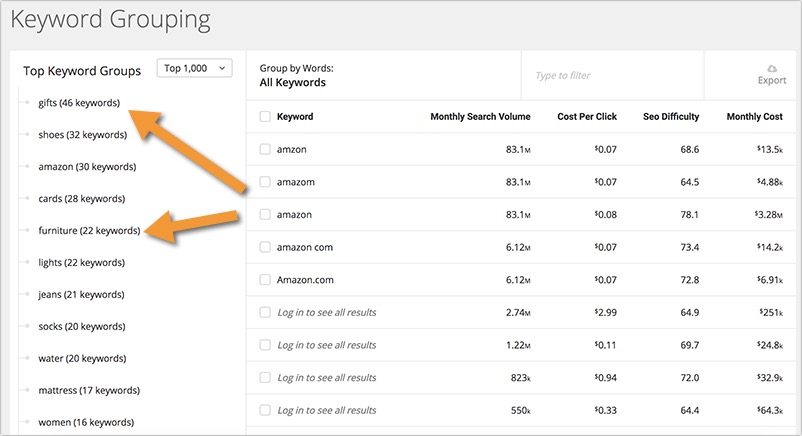
Keyword grouping gives you a valuable insight into which products your competitor chooses to invest most.
3. Learn How Your Competitors Are Linking to Their Landing Pages Internally
Another good way to better understand which landing pages your competitor is focusing on is to see which pages they link to most internally. Besides, understanding any site’s structure can be quite enlightening because you can discover important correlations between how they link to a page and how that pages ranks in Google.
JetOctopus is the fastest web-based crawler which, among other things, allow you to analyze internal site structure. I believe this feature is quite unique (at least I haven’t been able to find anything similar using other crawlers).
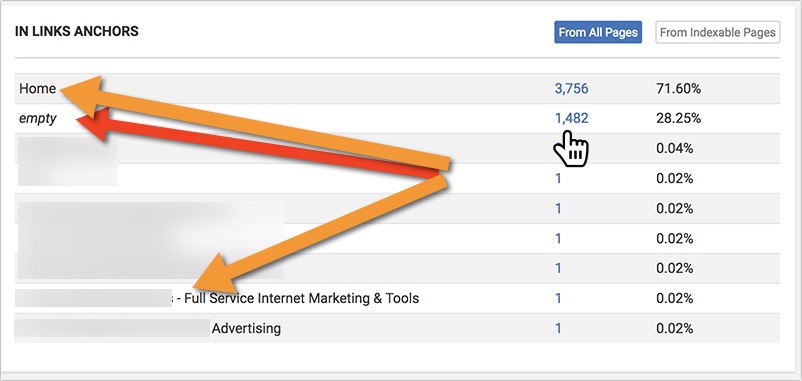
Apart from finding the most linked-to pages, you can also see which words your competitor is using to link to their important landing pages. Look out for creative action-triggering wording to come up with more ways to link to your landing pages, apart from the obvious “click here”, “download”, etc.
4. Get Notified When Your Competitors Edit Their Key Landing Pages
After the above steps, you should have a solid list of competitor’s landing pages you have found (through looking at their organic rankings, PPC campaigns and internal structure).
It’s a good idea to set up a monitoring tool to get notified once they update, edit, re-design or delete the pages. Topvisor has a neat feature monitoring any number of pages for changes. Add as many landing pages as you were able to identify and watch them using a helpful grid highlighting any edits and saving the whole history:
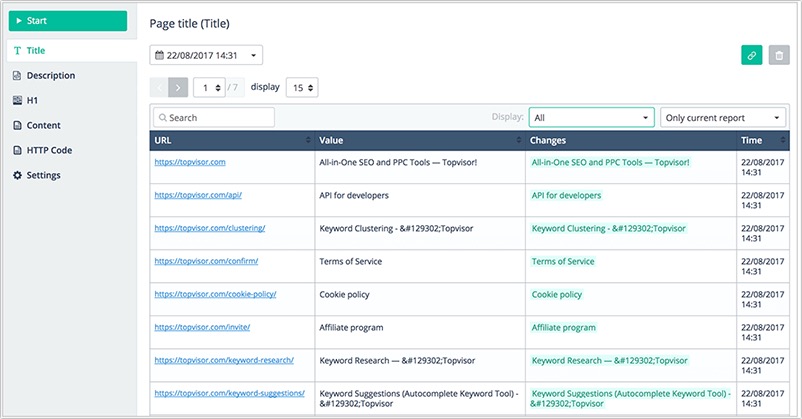
Topvisor has many more SEO-related features built-in, so here are quite a few more monitoring tools that could work for you in case you are interested in more focused solutions.
5. Monitor Your Competitor’s Happy and Unhappy Customers
This trick is quite awesome and I bet you haven’t thought of that when setting up your competitive intelligence process.
Use Twitter emotion search to monitor your competitors’ mentions, especially those containing “smileys”.
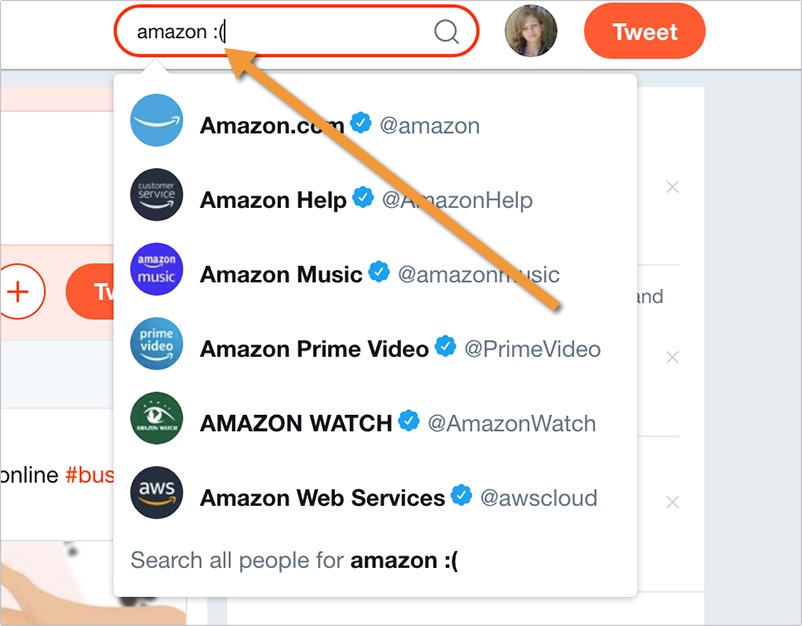
For negative emotions 🙁
- Create a list of competitors’ fails their customers are complaining about and try to avoid those mistakes
- On some occasions, approach your competitors’ customers carefully to offer your product instead (may be tricky but hey, why not?)
For positive mentions 🙂
- Keep track of your competitors’ happy customers and make notes of what you should do to learn from that success
- Come up with ideas on how to implement these findings in your conversion optimization strategy

If you are monitoring a bigger brand, consider monitoring these tweets using a standalone tool. I am using Cyfe to collect and archive important Twitter search sets because it makes so easy to store, analyze and share these results:

What other competitor intelligence and monitoring tools are you using to spy on their conversion optimization tactics? Please share!

